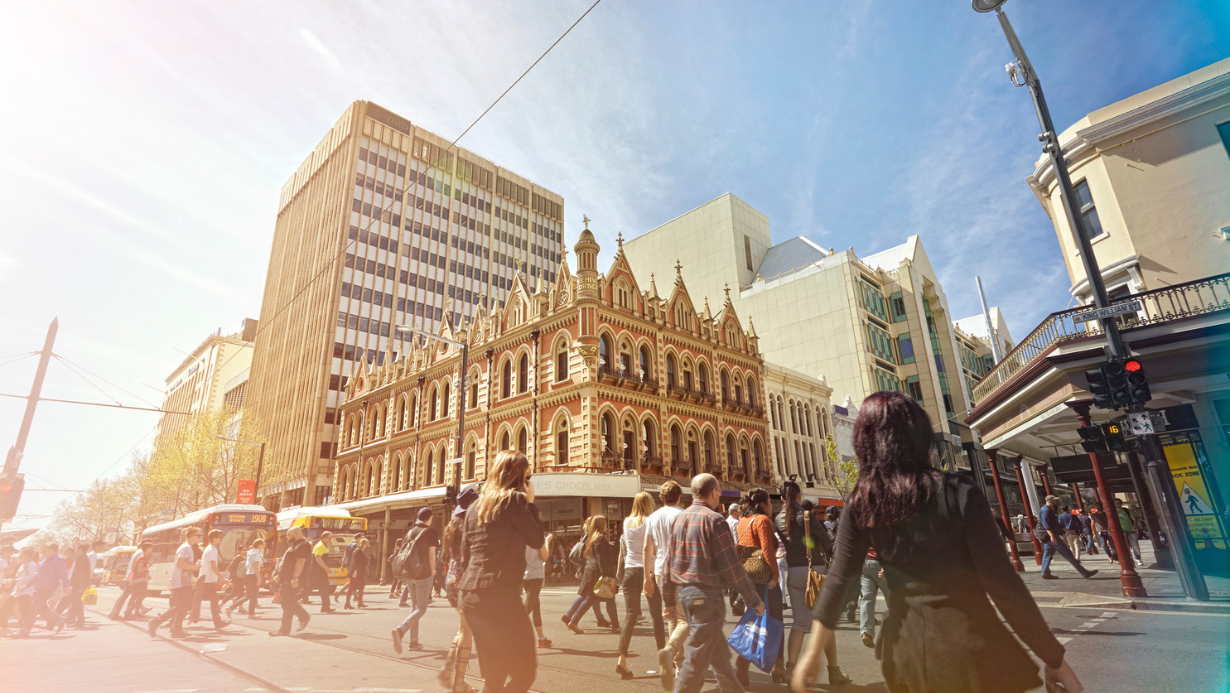
 visit raa.com.au
visit raa.com.au
With the AFL Gather Round set to welcome thousands of footy fans to games in Adelaide this weekend – RAA is urging road users to keep safety front of mind.
Footy fans are encouraged to take advantage of the free public transport on offer from Adelaide Metro, and to expect a large number of people on the city streets.
In 2023, 19 pedestrians lost their lives on South Australian roads – 14 of which occurred in the metro area. That’s a massive 106% increase on the previous five-year average.
To help keep city walkers safe on our roads, RAA Senior Traffic Engineer Matt Vertudaches has revealed his top 5 pedestrian safety and walking etiquette tips.

Crash data shows around 85% of serious and fatal pedestrian crashes occur at locations where there is no designated crossing such as traffic lights.
Further, under the Australian Road Rules (rule 234) it is an offence to cross a road within 20 metres of a pedestrian crossing, anywhere other than the crossing.
If there is a pedestrian crossing in your vicinity, using it correctly will not only ensure you’re obeying the road rules, but will greatly reduce your risk of being involved in a crash.
If footpaths are busy, it might be tempting to quickly move onto the road to overtake a group of slower walkers. But doing so can take nearby drivers by surprise and expose you to traffic.
Matt says, “In the CBD especially we have a lot of scramble crossings to help walkers get to where they need to go quicker, so you shouldn’t need to take dangerous shortcuts to reduce your travel time.
“Remember to leave a few extra minutes for your journey when the city is busy, so you don’t have to risk your personal safety.”
Distraction is typically the leading cause of road trauma, and it’s important for all road users, including pedestrians, to be focused when they’re sharing the road with others.
If you need to use your phone to find directions or message a friend, pull off to the side and do so while you’re stationary.
This is especially important if you’re about to enter a road to cross it – make sure you’re focused so you can stop, look, listen and think before stepping onto the road.
This also goes for headphones, especially those with noise-cancelling capability or at loud volumes. Audible cues like the sound of an approaching car, or the ding of a bicycle bell from behind can be highly important to stay safe.

Even if you’re at a designated crossing, it’s a good idea to make eye contact with any drivers who are stopping to let you through – especially if there are no traffic lights, like at a zebra crossing. Making eye contact helps you to confirm the driver is stopping to let you cross, or to see if they might be distracted.
“Just because you have priority at a particular crossing, it doesn’t automatically make it safe.”
It’s common courtesy to walk on the left side of the footpath – it’s more predictable to walkers coming in the other direction and allows footpath traffic to flow smoothly.
Not doing so can confuse other pedestrians and even lead to an awkward dance as you try to pass one another… that’s the stuff of nightmares!
And, if you’re walking with a group of people, make sure you remain mindful of other walkers who may wish to pass in either direction.
For more on RAA’s road safety initiatives visit raa.com.au/roadsafety.